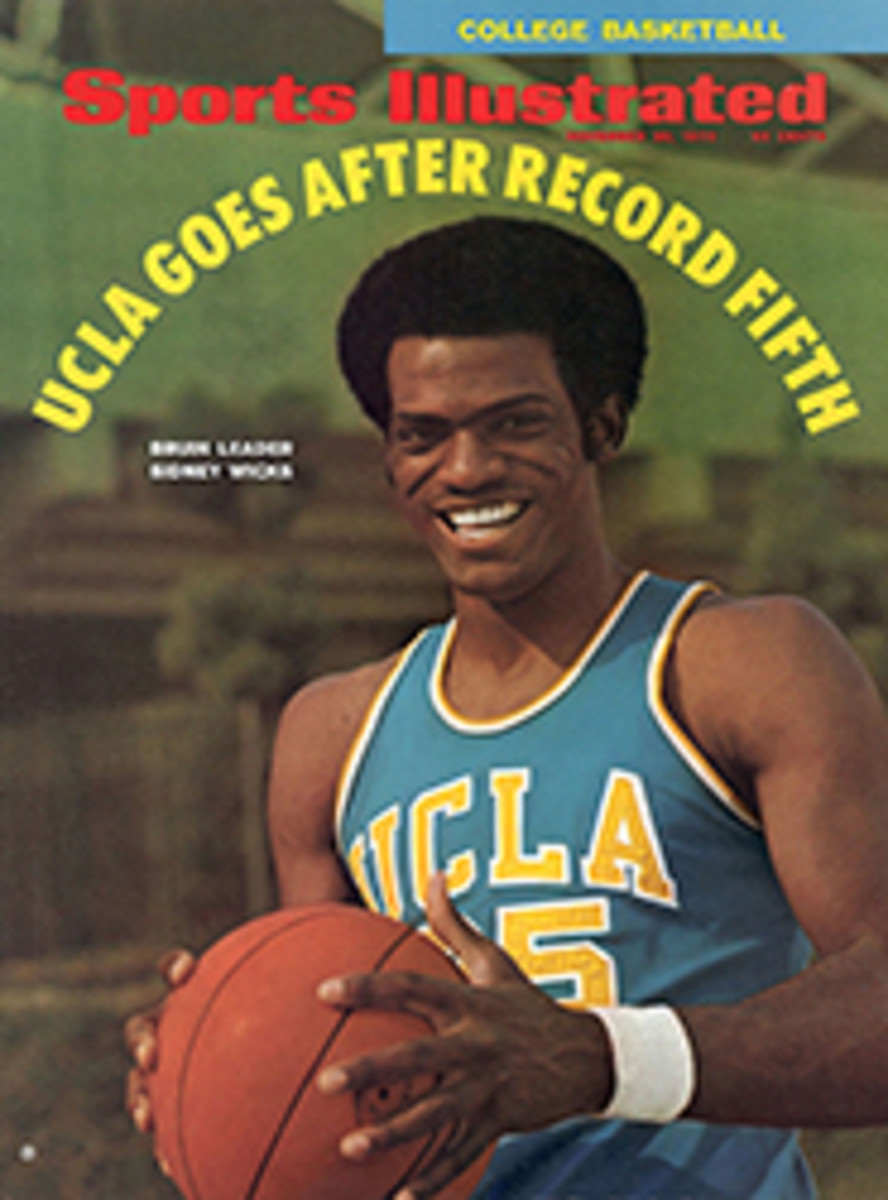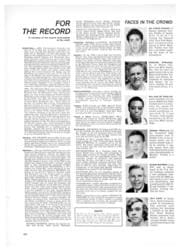
A modern Johnny Appleseed
In cowboy boots, string tie and ten-gallon Stetson he appeared oddly out of place at New York's LaGuardia Airport. And from the way he hovered over the six big cardboard boxes that accompanied him, protecting them from customary airport abuse, it was obvious he was guarding some very special cargo. It was special; Tom Bolack, oilman, rancher and former governor of New Mexico, had traveled halfway across the country to plant the first Navajo willow trees in the state of New York.
Tom Bolack has been planting Navajo willows in New Mexico—and lately, in other parts of the U.S.—for almost 20 years. Like those he was to plant in Carmel, N.Y., all the Navajo willows now growing in the U.S. stem from a single giant tree. It was brought from China by a returning missionary almost 100 years ago and planted on the Navajo Indian Reservation near Bolack's home city of Farmington, N. Mex.
In 1957, when Bolack bought the initial 350 acres of what is now his 3,000-acre B-Square Ranch adjoining Farmington, his first act was to establish a full-scale nursery and stock it with shoots from the original tree. In the 13 years since, the B-Square has produced almost a million Navajo willows, and Bolack has given away more than half that number to schools, churches, municipalities, colleges and hospitals. In a single year, in New Mexico alone, B-Square has donated some 50,000 trees worth more than $200,000 as part of its private campaign to "keep New Mexico green."
The trees now grow as far south as Vero Beach, Fla. and as far north as North Dakota. In most places the willows have been used to reforest barren lands, but last year the trees were planted to landscape the outside of Dodger Stadium at Chavez Ravine.
The planting in New York was for still another reason. The trees were a memorial to a young teacher, Diane Gorman, who died last spring after an automobile accident while en route to the Kent Elementary School in Carmel, N.Y. When Bolack was asked if he would provide a memorial tree for each of the children in her third-grade class, he not only agreed but insisted on bringing them himself. At the school he supervised the planting and then led the dedication to the young teacher he had not known.
Such personal involvement is as characteristic of Bolack as his Western clothes, and because it is not common in our society it is often as suspect. Bolack fits no easily recognized pattern, a fact that contributes considerably to the mixed emotions about him. He is a geologist without a degree; a politician who is not running for office; a hunter who spends most of his time protecting game; a farmer who profits from few of the crops he grows.
Born 52 years ago on a Kansas farm, Bolack spent his boyhood milking cows and operating the family farm machinery. When he was 16, already 6 feet tall and weighing 200 pounds, a wildcatter drilled a well on the farm. The well was dry but Bolack's imagination brought in a gusher and he left the farm to seek his fortune in more productive fields. The fortune he eventually found is estimated today at several million dollars, but it took a bit of drilling. For years Bolack lived off the land, shooting rabbits and other small game for food. What he did not eat himself, he traded with a night watchman on a construction crew in exchange for moonlight practice sessions learning how to operate some of the heavy equipment. Today he still runs a bulldozer on his ranch with the enthusiasm of a boy and the skill of a professional.
There was no oil-related job in those early years that Bolack did not hold at one time or another. Fie worked as a laborer, shovel operator, tool dresser, roustabout, driller and miner.
At night, when he was not learning how to handle another piece of mechanical equipment or how not to handle some of his fellow workers (he acquired six broken noses, 14 concussions and a set of permanently gnarled knuckles in the process), he took correspondence-school courses in geology by the light of a lantern on the dashboard of the battered Hudson car that served as his home as well as his transportation. It eventually served too as collateral on the $600 loan that launched Bolack's fortune.
For two years Bolack applied his mail-order expertise to a survey of the San Juan Basin, a wasteland in northwestern New Mexico that other geologists had written off. "The more I studied the area," Bolack recalls, "the more convinced I became that it had to be rich in oil and gas." His faith in his own survey was so strong and his arguments so persuasive that he managed to talk a banker into putting up the initial $600 he needed to buy leases in the area. Within months, Bolack proved himself right.
Less than a year after he bought his first leases, Bolack sold a block of them to an oil company for 520,000 and a 5% royalty. He drilled his first well in the San Juan Basin in 1953, and then went on to drill 14 straight producers. In 1958 he sold leases on 560 acres to Standard Oil for $3 million plus royalties. Today he still holds leases on more than 100,000 acres in the San Juan Basin, Alaska and Montana, and has interests in 140 oil wells and a variety of businesses, including a small airline, travel agency, uranium firm, shopping center, gypsum plant, four banks, a baseball club and a ski resort.
Bolack's political fortune also began in the San Juan Basin. In 1952 he was elected mayor of Farmington, a town that at the time had 3,500 residents and 20 feet of paved road. Bolack immediately set about changing things—adding roads, an airport and new businesses. But what the region needed most was the water of the Colorado River and its numerous tributaries. Bolack, as chairman of the Aqualantes, a four-state citizens' crusade, launched an exhausting oratorical campaign that extended from Arizona to Washington, D.C. His efforts resulted in passage of the Upper Colorado Bill and the establishment of a network of power and irrigation projects that dramatically changed the agriculture and economy of the four-state region.
In 1960, after serving in the New Mexico legislature, Bolack ran for lieutenant governor and was the first Republican in 32 years to be elected to that office. He became governor—and held office for only two months—after Governor Edwin Mecham resigned to fill a Senate vacancy.
"He enjoyed every minute of it," a newsman recalls. "He'd sit back in his chair, put his feet and a bottle on the big desk and invite us all in to swap stories. The guys ate it up. He may have been the shortest-term governor in the state, but he was certainly one of the most popular."
When Bolack began his B-Square Ranch in 1957, his wealth was already such that it would have purchased the richest land in the state. Instead he chose 350 acres of what was probably the poorest.
"I wanted to prove a point," Bolack says. And he did. By draining, leveling and irrigating those original 350 acres, he managed to put 250 of them into cultivation. By bulldozing and banking the San Juan River, he cut back erosion, prevented the uprooting of hundreds of trees and reclaimed land that had hitherto been useless.
On this land he has produced, in addition to the Navajo willows, more than 100 varieties of vegetables that year after year have taken top prizes at the New Mexico State Fair, proving to his neighbors and the world that one does not have to start with the best farmland to grow the best produce. "One of the main goals at B-Square," Bolack says, "has been to teach the Navajos in the area not what a millionaire can do but what they themselves are capable of and can afford to do. When they see rich green growth where there was once gray waste, they know that they can make their own gray lands green, too."
Bolack's efforts have not been limited to greenery. Over the years he has converted his ranch, now grown to 3,000 acres, into a vast wildlife sanctuary. He drained swamps, created an 85-acre artificial lake and built dozens of nesting islands for waterfowl. On land, he left unharvested countless stands of grain and corn to provide food and cover for the chukars, guinea fowls, coots and Canada geese that he brought in and released there. These were soon joined by pheasants, quail, doves and ducks, for which more than a ton of ranch-grown grain is scattered daily as part of the feeding program. This past winter more than 25,000 waterfowl wintered at the B-Square. The ranch, on which Bolack prohibits hunting, is now a regular stop on annual wildfowl migrations.
"We cannot go on taking from the land without putting something back. That is what this is all about," Bolack says, surveying the green, game-filled expanses of his ranch. "Everything here tells part of the story about what can be done with land when it is used wisely and well."
Bolack has devoted most of his energies in past years to trying to make people listen. He has, at his own expense, run hundreds of ads in state and national media urging the multiple use and development of the country's natural resources. His ranch, its main house, trophy rooms, greenhouses, lakes and fields are open to the public at no charge, and each year close to 20,000 visitors, many of them schoolchildren, come to see for themselves what the Bolack brand of practical conservation is all about. He is a tireless speaker, winging from city to city across the nation, planting trees like a latter-day Johnny Appleseed and entreating cub scouts, civic societies, college students, sportsmen and schoolchildren to give back to the earth some of what has been taken from it.
PHOTO

